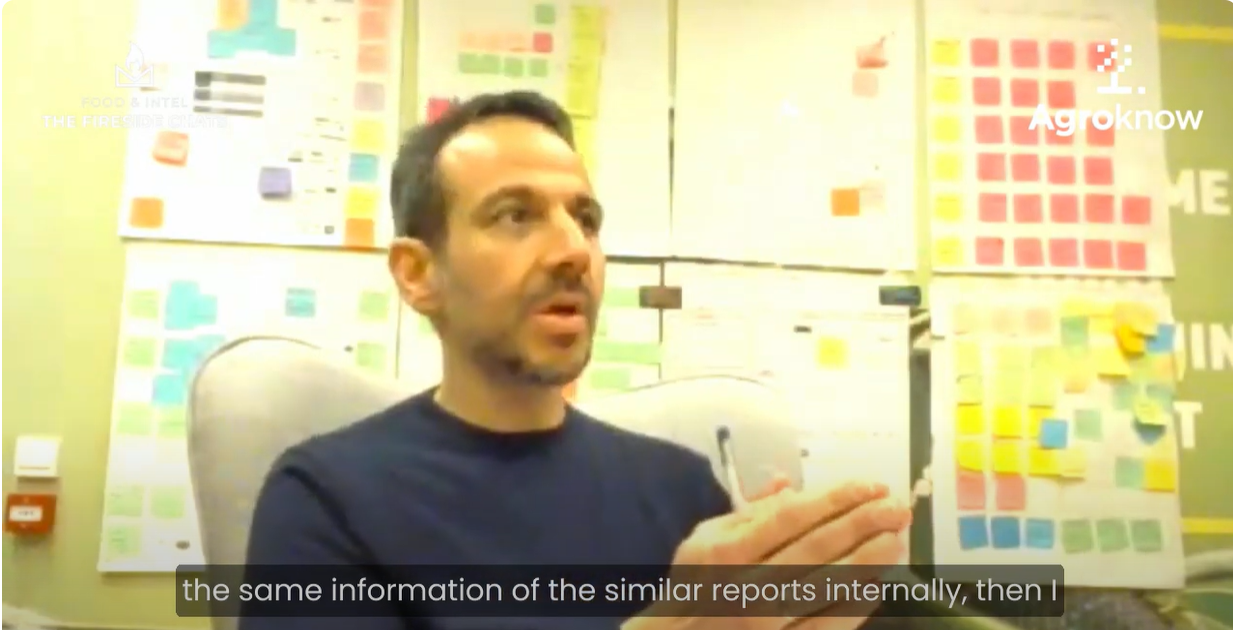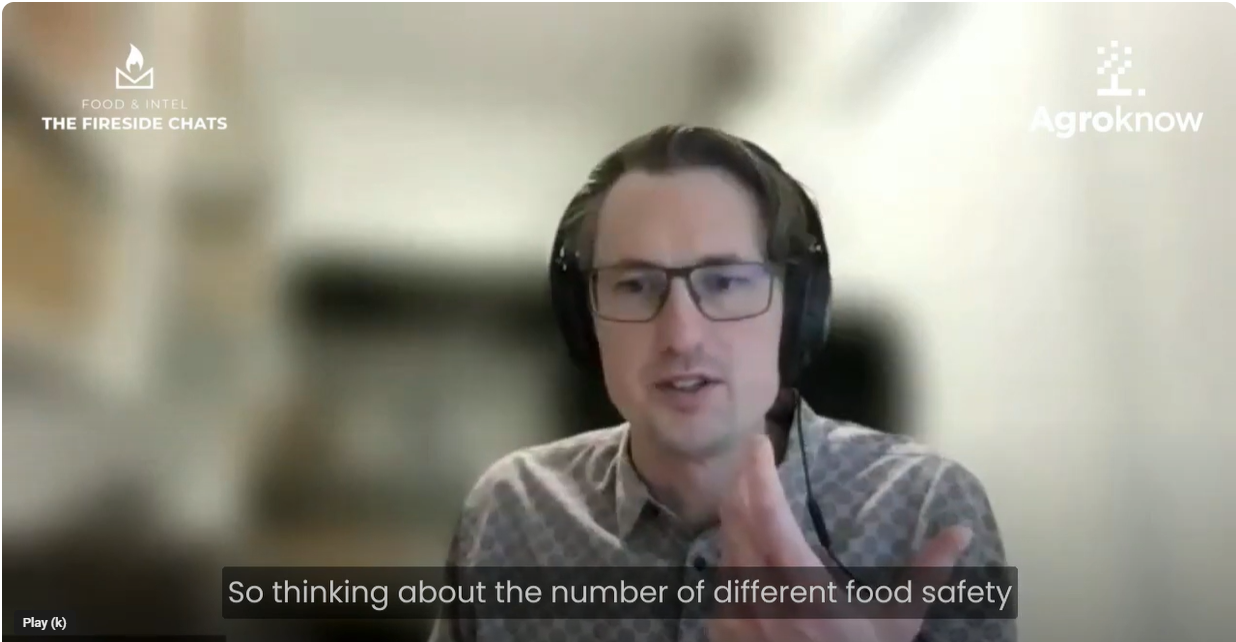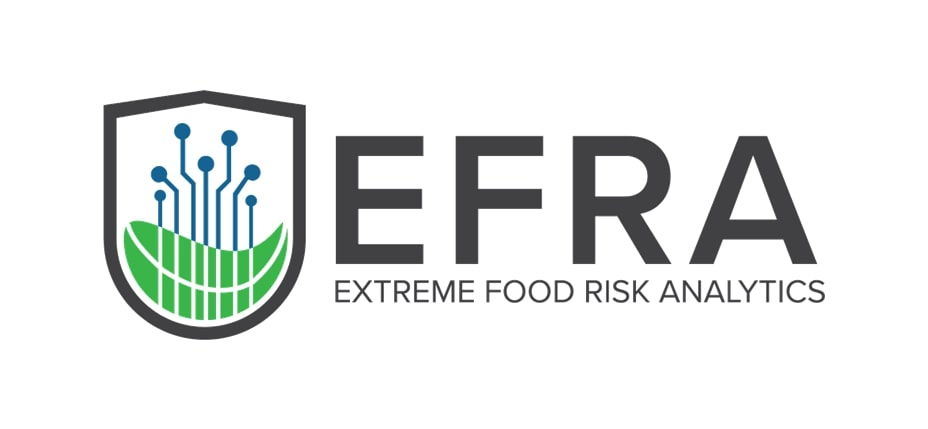
“These tools… are innovating, it’s a tremendous way to augment the efficiency of your business”
Back in March, Agroknow launched the Food & Intel Fireside Chats spearheaded by Nikos Manouselis, CEO at Agroknow. In this video series, he delves into the world of digital food safety to discuss the AI technology applications that promote innovation.
In the inaugural episode, Nikos Manouselis invited Erik Westblom, CEO at Provision Analytics to discuss how new technologies are contributing towards ensuring that food safety standards are met and exceeded.
Some highlights of the discussion included:
- How AI can help simplify complexity in Food Safety
- What the future holds for Food Safety Software
- The importance of user experience & adoption in the field
- Compliance powered by food risk intelligence through AI while considering data governance and privacy.
- The necessity of a more collaborative approach through knowledge sharing in the industry
- Customization versus standardization in food safety technology.
Watch the full episode here.
Here’s a short snippet of the interview:
Nikos: Where does AI come into play in the world?

Erik Westblom: I think we're still at the bottom of that inflection point and the industry as a whole knowing more pragmatic general user tools that's come out like ChatGPT. We use that internally at our business all the time. And so, our look at it is how do you extrapolate something like ChatGPT or these large language models and how can you start applying it to our product or to food safety at a macro level or whatever that means? And then you could start looking at the perceivably more complicated things after that.
Nikos Manouselis: Can you give me a scenario, a use case where you see such a solution like a large language model being useful and relevant for one of your users?
Erik Westblom: Yeah. We're starting to poke around with a little bit internally, if you were to apply one of these large language models to a food safety program, how much efficiency can be gained? Because, where food safety captures a lot of data in a lot of different instances of paperwork, right?
So, you fill out a sanitation record on a daily basis, so you fill out a packing, cooling, storage, harvest records, whatever. These are at the farm level with the packing level. If you're filling out this paperwork, you have a lot of instances of that data captured on repeat. Today our software does a tremendous job in speeding up the audit preparation component. So instead of taking a whole bunch of binders or paper or spreadsheets and organizing them in preparation for an audit, our software can compress all of that into customized tabular reports to pull out what you need when you need it.
So now let's fast forward to AI and we're poking around it. Could you just dynamically ask an LLM for the information you want on the spot, right? Can that be streamlined and sped up? I think so. But there's the combination of is it pulling what you need? And then what does user adoption look like? And I. Think that's going to be trailing the rest of AI adoption and humanity.

Nikos Manouselis: So, what I hear you saying is that we have lots of data that we are collecting, and we are trying to organize. Coming in different formats but also at different time instances, points in time, and different workflows. And we already do a great job you're saying in facilitating and making easier the way that people interact and discover the information that they need within all this data. But what we would like to explore is whether we can do it in a more natural way. This kind of interaction with a system that will provide or will extract the information from all the data.
Give me an example of a question that I can ask to provision analytics ChatGPT. So that I get I can get such an answer.
Erik Westblom: Yeah, I mean, we don't have it built yet. You're kind of reaching into the top-secret lab here, but. You know, I think a great example of this would be. Prepare my audit. Give me all of the paperwork for the last year associated to packing, cooling and storage for FSMA 204. Pull all the key data elements for FSMA 204 associated to this product, and again, rather than going and configuring these tabular reports, you could pull dynamic information just right out of your database real time in any formatted layout that you want.
So, whether it's the FDA demanding it or some of your biggest customers, you can shape it into bullets. You could put it into a long form readout, right? It's the dynamic nature that you can pull and organize that data very quickly.
Nikos Manouselis: So, what you're describing here if I get it right, I will try to translate it in simple components in in my mind. First of all, the question per se hides the complexity of the requirements of the final format of this report. So, I don't have to define it by using some kind of screen or selections or whatever, I just spill out my request and then the machine, the model translates this into fixed requirements that it does know the FSMA needs. That's one part. Then the second part if I get it right is getting from all the data that I have in my storage, in my databases, the right pieces of information that come and meet those requirements and then preparing practically the actual report in a format that is required and acceptable by the inspection authority. Do I get this right? Is this what you have in mind?
Erik Westblom: Yep, you're absolutely correct, and if you? You know, if you consider some of the largest buyers in the food supply chain today, think about the biggest retailers, Walmart, Kroger, Albertsons, in Europe, would be Carrefour. Go to Australia, Woolworths, whatever it is, these large retail chains or even the large restaurant consortiums. We're starting to see them creating addendums or their adjustments to core food safety standards like SQL, FBRC, whatever that is.
Well, what you used to be able to produce for an audit preparation report for one standard now has a whole bunch of different variations that are potentially coming down, you know, currently or in the future. So rather than configuring a whole bunch of reports and trying to monitor all these different standards, I think there's probably an opportunity to just train models on what the expectation is and then just call on the information you need for, uh, that entity that's looking at you or the use case that you're trying to pull that's being organized for you dynamically instead of having to handcraft and hand tune these things over time.
Want to know more?
You can watch the discussion on our YouTube channel here or listen to it on our Spotify account here.
Want to receive helpful food safety intelligence in your inbox?
 Funding for this research has been provided by the European Union’s Horizon Europe research and innovation programme EFRA (Grant Agreement Number 101093026). Funded by the European Union. Views and opinions expressed are however those of the author(s) only and do not necessarily reflect those of the European Union or European Commission-EU. Neither the European Union nor the granting authority can be held responsible for them.
Funding for this research has been provided by the European Union’s Horizon Europe research and innovation programme EFRA (Grant Agreement Number 101093026). Funded by the European Union. Views and opinions expressed are however those of the author(s) only and do not necessarily reflect those of the European Union or European Commission-EU. Neither the European Union nor the granting authority can be held responsible for them.








